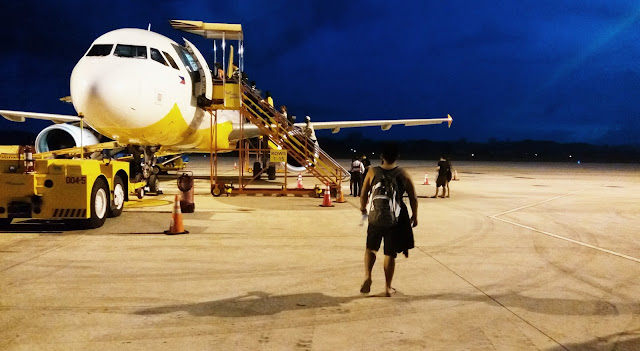By Valred Olsim
The cross-carrying armored conquerors came with ordained swords – purging the pagan relics and substituting them with the Christian religious icons. Then, the paths were named after the Saints, and villages were named after Christian doctrines, events and symbols. The unification of lands at the foot of Montanosa was named “La Union” (The Union), and the valley town where the Cabacera (Capitol) overlooks “three prominent hills” was named “La Trinidad” (The Trinity).
The cross-carrying armored conquerors came with ordained swords – purging the pagan relics and substituting them with the Christian religious icons. Then, the paths were named after the Saints, and villages were named after Christian doctrines, events and symbols. The unification of lands at the foot of Montanosa was named “La Union” (The Union), and the valley town where the Cabacera (Capitol) overlooks “three prominent hills” was named “La Trinidad” (The Trinity).
The
skeptic may insist that La Trinidad was named after Spanish Soldier Guillermo
Galvey’s wife, Donya Trinidad, but Galvey’s military records show no wife, and
the name “La Trinidad” was actually recorded to have been given by Galvey’s successor
Commandante Manuel Scheidnagel, decades after Galvey’s death. As an imperative, Conquistadors dedicate a subjugated place to their Christian faith, or to
the Royal crown…not to their wives or girlfriends.
Before
the Trinity of Benguet, there was the island of “Trinidad (and Tobago)” which
was encountered by Christopher Columbus in his “third” voyage. It was named
similarly to the Christian doctrine of the Holy Trinity which holds that God is
three consubstantial persons or hypostases—the Father, the Son (Jesus Christ),
and the Holy Spirit— or as "one God in three Divine Persons".
The
number three is popular in the context of symbolism and spirituality. It can
refer to the harmony of “Mind, Body, and Spirit”, the “3rd
Dimension”, the “three wishes”, the resurrection on the “3rd day”,
the “three stages” of birth, life, and death, the “three timelines” of past,
present, and future. Hence, the number “three” is said to mean “completion”.
An
i-La Trinidad friend reminded me that for a successful life, one must have the
three essentials of friends, family, and faith. A day should be fun, fruitful
and fair. And we should always have the three values of love, hope, and joy.
Three is indeed, a special number. Just the same, the Trinity (La Trinidad), is
a very special place to me.
****
With
newfound vigor, I’m back to the job of telling good stories about the Trinity
(La Trinidad). Despite the mounting number of meetings and paper works, we made
sure that we will have a year-ender event which is related to tourism. Hence,
we have organized the 2nd La Trinidad Tourism Conference on December
20, 2017 at the beautiful Mt. Kalugong Eco-park. We imagine it to be a meeting
of tourism stakeholders and tourism-interested members of the community, and at
the same time an avenue to appreciate the gems of our town (since the yearly
conferences will be held on the different tourist spots of La Trinidad). We
will also have an afternoon music jam to further add value to the event
experience while offering coffee and wine to the attendees! Due to the limited
capacity of the mountain park and the unique condition of the access road, we
only produced 200 tickets to effectively manage the activity. Interested
persons may visit the Mayor’s Office for the registration forms and tickets! Asen taha shiman da! Men-iila tako isdi!
Kitakits!



































